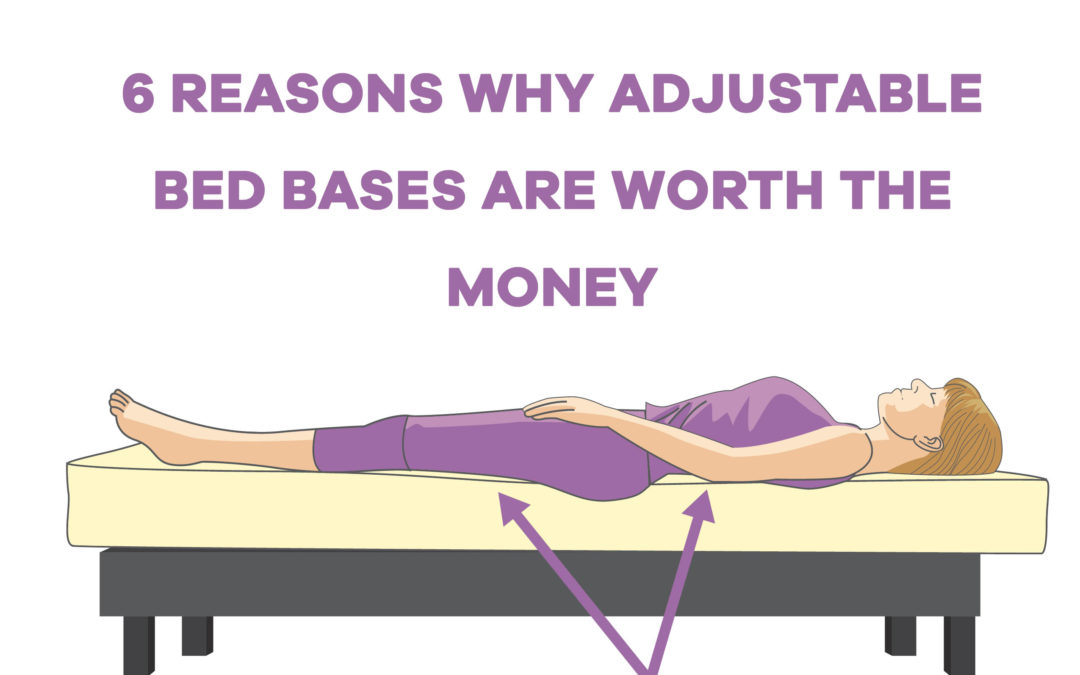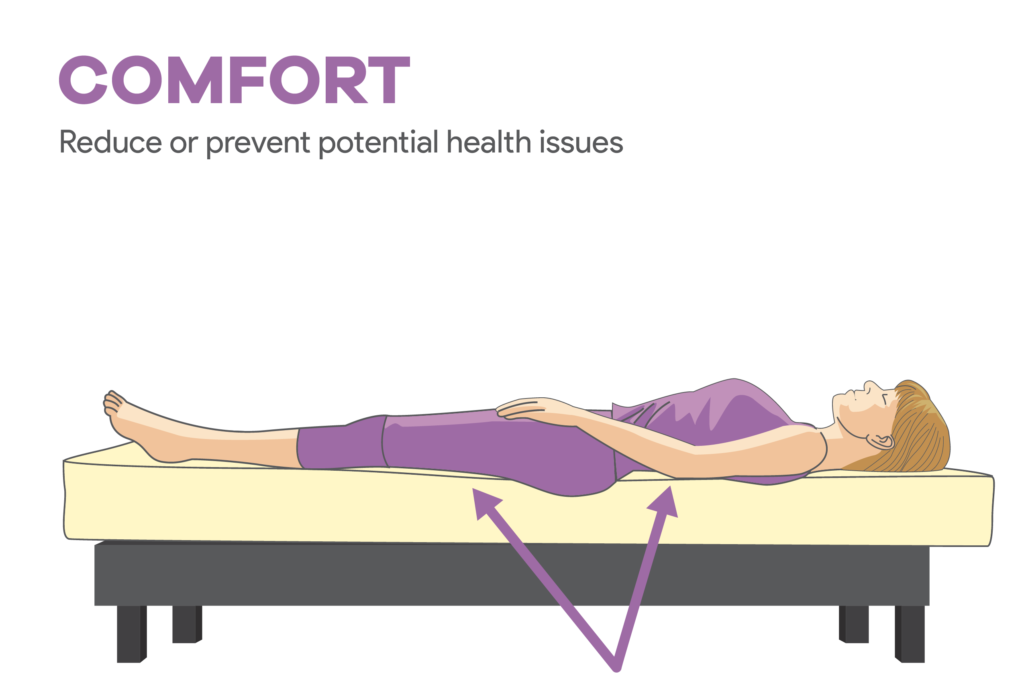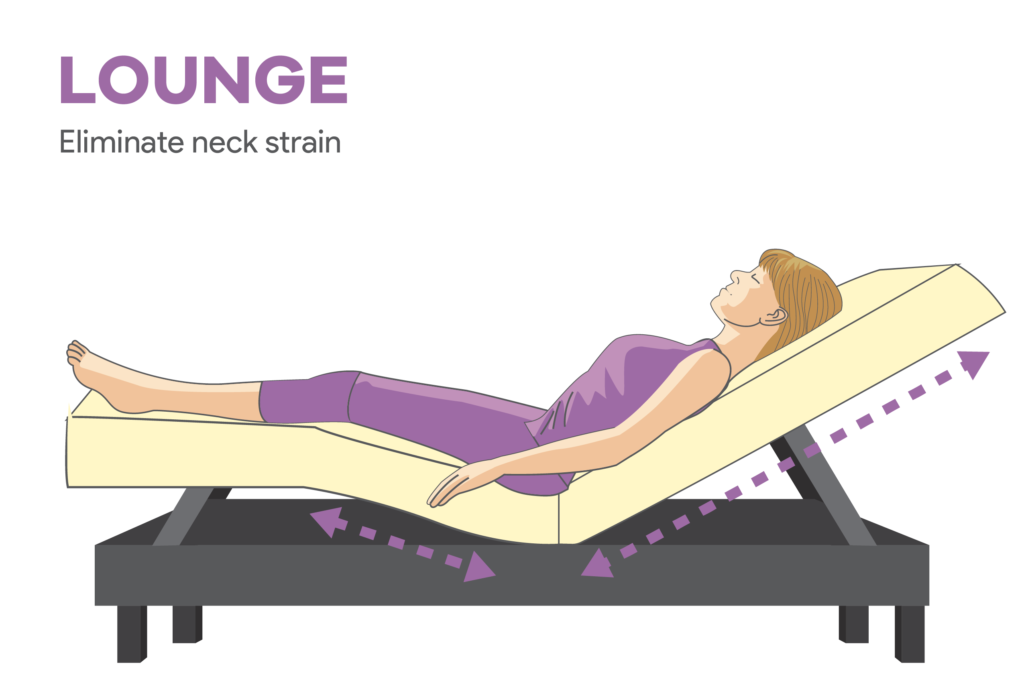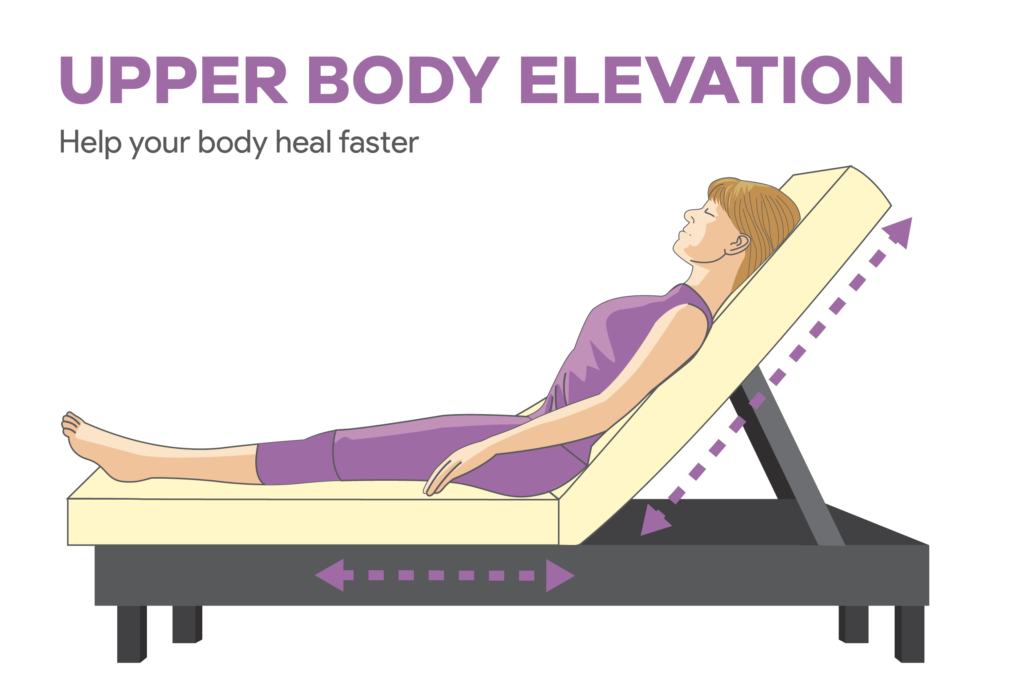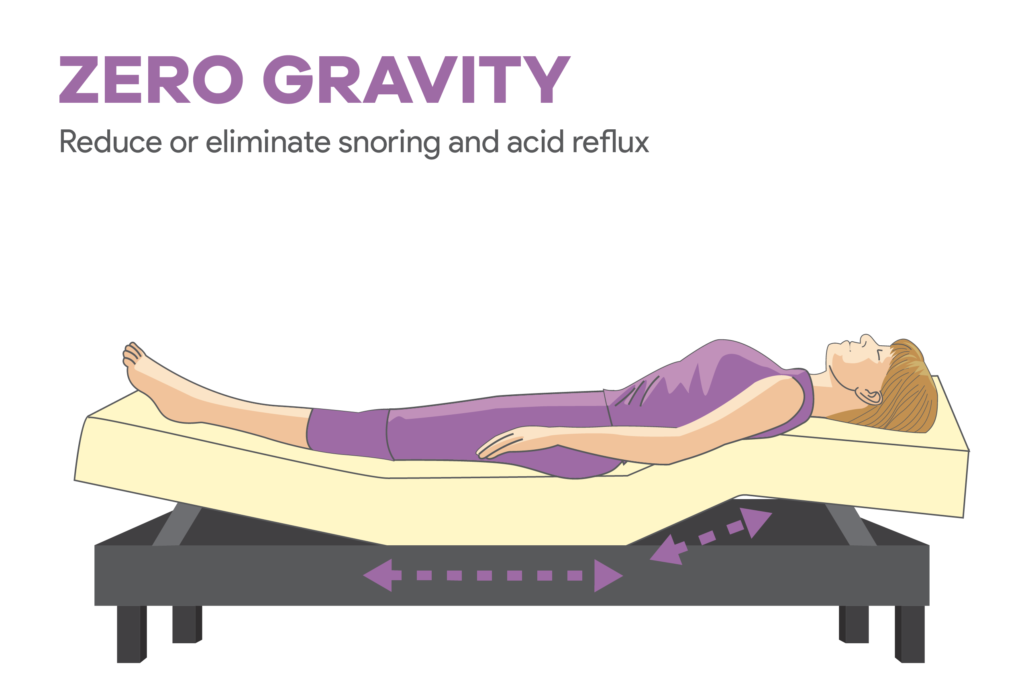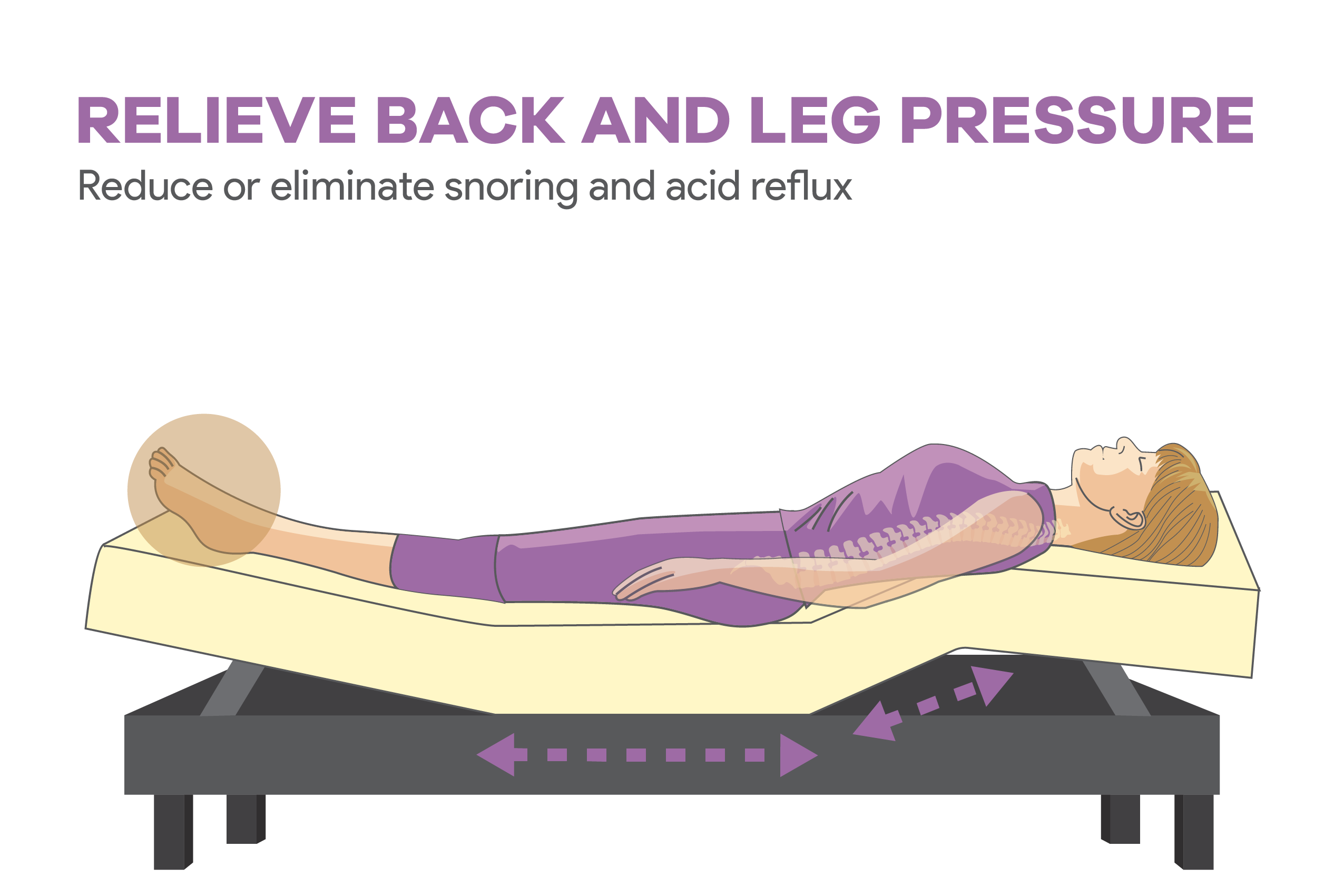Three essentials are required in order to sustain life – food, oxygen and sleep.
The U.S. government has our collective backs for two of the three. Air quality has been regulated by the Environmental Protection Agency (EPA) since 1970. Ensuring the safety of our nation’s food supply has been the mission of the Food and Drug Administration (FDA) for well over a century. And though sleep is required to live, little progress has been made in prioritizing sleep quality as a public concern.
While Medicare will honor a doctor’s prescription or an adjustable bed deemed “medically necessary”, the benefit applies only to rented equipment and is limited primarily to those over the age of 65. For the remaining 85% of the population, an adjustable bed might be the best investment we can make in quality of life and long-term preventative care. Below are just a handful of tangible and potential benefits of purchasing an adjustable bed base.
Keeping your current age in mind, consider the likelihood that you will experience the items on this list at some point. It’s also important to note that adjustable bases rarely require purchase of a new mattress and can accommodate foam, latex, and pocket-coil mattresses.
1. Adjustable Bed Bases Increase Comfort
It may seem obvious that a comfortable bed promotes a good night’s sleep. What may be more challenging to perceive is the long-term effects of overlooked discomfort. But implications for long-term lack of sleep are actually quite dire – especially when limiting the body’s time in REM sleep.
Rapid Eye Movement (REM) sleep should begin about 70-90 minutes after we first fall asleep. It’s in this deepest state of sleep that vital neural connections occur which impact our ability to learn as well as to generate and retain memories.
According to the National Institute of Neurological Disorder and Stroke , people who are chronically sleep deprived can experience a myriad of health conditions including stroke and cardiovascular disease, certain types of cancer, and weight control issues. Researchers continue to investigate the connection between poor sleep quality and Alzheimer’s and Parkinson’s.

As we experience muscle soreness, back pain, congestion, medical conditions, even surgery, fluctuating weight – individual comfort can be frequently redefined. An adjustable base will allow for changes in position for optimal comfort to accommodate our body’s fluctuating sleep needs, ushering our mind and bodies into the vital REM sleep stage.
2. The lounge position keeps your body aligned while using technology in the bed.
The lounge position provides a great position to watch tv, use a phone or tablet, or work on a laptop. Engaging in these activities without proper posture can put strain on the neck, causing pain or injury to the shoulders, spine and back.
The key to preventing neck strain is aligning your body in a relaxed position that allows the viewing target to effortlessly fall within your line of sight. Placing pillows behind the back and neck can seem sufficient to achieve this until the filler within them settles. With the mind engaged in what is being read or viewed, continual compensation for the settling is made subconsciously by changes in neck position.

As we switch from viewing a television across the room to working on a laptop to viewing a phone or tablet, optimal alignment needs also shift to maintain the relaxed line of sight without strain on the neck or spine. For individuals that enjoy these activities in bed, an adjustable bed base that offers proper support to the back and neck while enjoying these activities is a wise investment.
The patented lounge feature setting on certain Rize models is ideal for providing the support needed. In addition to built-in USB ports, some of these models also include built-in speakers and Bluetooth technology – providing the ultimate viewing experience.
3. Elevating the upper body can promote healing after childbirth and some
surgeries.
Sleep after surgery and childbirth can be elusive. Between anesthesia side effects, discomfort from healing wounds and anxiety that often follows certain surgeries, finding a comfortable sleep position can be tricky. Physicians will often times recommend a specific sleep position to promote the recovery process. During pregnancy, added abdominal pressure can create restriction in airways, prompting the onset of obstructive sleep apnea . Frequently continuing after childbirth, this sleep disorder is linked to an overwhelming list of conditions that could limit the quality and quantity of life enjoying your little one.
Fitpregnancy.com shared research results indicating that 50% of women suffering postpartum from mild to severe obstructive sleep apnea were cured by sleeping with their upper body elevated to a 45 degree angle. Interestingly, this same position is recommended for women recovering from C-sections because it reduces tension in the abdomen.
For many individuals recovering from surgery, the quest for sleep will guide them to an online search for recommendations from those with shared experience. Most online forums have a section dedicated solely to the discussion of post-surgery sleep positions.

For example, those recovering from weight loss surgery report that elevating the upper body to 45 degree angle or sleeping in an upright position were their only options for comfortable sleep. The same position is recommended by individuals recovering from heart surgery as the rib cage repairs. Shoulder surgery is often followed by recommendations to sleep only slightly elevated with a pillow propped under the recovering arm.
4. The Zero Gravity position can alleviate sleep depriving conditions
Named for how astronauts are positioned during takeoff, sleeping in zero gravity position is all about the angle between the chest and knees. With the head raised, the knees and lower legs should be elevated just above the heart but below the head. Benefits of sleeping in zero gravity position continue to be discovered, though many are mentioned below.
WebMD is among several medical resources to note that elevating the head during sleep can open nasal passageways. For an estimated 45% of adults who snore, this sleep position can dramatically impact or eliminate snoring altogether.
Another common ailment to be minimized with the zero gravity sleep position is acid reflux, which is estimated to effect up to 1 in 5 American Adults. Healthline.com includes mention of elevating the head in their list of remedies to combat heartburn, acid reflux, or even gastroesophageal reflux disorder (GERD).
5. Adjustable bed bases help relieve pressure from back and legs
Long hours hunched over a screen can wreak havoc on our posture as the vertebrae in our spine become compressed or misaligned. This can also cause damage to the Sciatic nerve, prompting pain to radiate anywhere from the lower back to legs lower legs.
Often times, sleep position can actually compound the issue if the lower back doesn’t receive proper support. Similarly, leg pain can also be exacerbated by a mattress that is mismatched for a favored sleeping position.
Sleeping with legs slightly elevated will support the natural curvature of the spine while also allowing weight to be more evenly distributed throughout the hips and pelvis.
An additional note is to consider the firmness of your mattress. Your sleep surface should make contact with the lumbar, relieving the spine of tension. In other words, your bed or mattress should conform to your body to provide adequate support. Those extra pounds elevate portions of the body, causing the lower back to directionally arch against the natural curvature of the spine.
An adjustable bed base that allows the legs to be positioned slight elevation to the lower legs can make significant improvements in recovering the workday’s damage to the spine. Bases are also available with lumbar support, specifically designed to support the spine’s realignment during sleep.
6. Adjustable bed bases can increase blood flow
Elevating the feet 6 to 12 inches above the heart can promote blood flow to the rest of the body, improving overall circulation and resulting in numerous benefits.
Healthy blood circulation carries oxygen and nutrients throughout our bodies, including the brain. Healthy brain function provides mental clarity, increased productivity, and equips us to better manage stress levels.
Skin also benefits from healthy circulation as vital nutrients supporting collagen production make their way to skin cells. Keeping skin healthy is vital to our overall health as it is our first line of defense against toxins and viruses.

Varicose vein treatment prescribed by medical professionals can often include elevating the feet above the heart, according to Johns Hopkins Medicine .
Paring an adjustable bed base with a latex hybrid mattress will provide ultimate circulation promotion and comfort.
Regardless of your age, there is a lot of life yet to be lived and our bodies will require ever-changing yet specific needs for optimal function. The simplest way to meet those needs is with an adjustable base. Fluctuating medical expenses make it impossible to provide an accurate cost analysis. However, one can imagine the potential cumulative economic impact of medical visits, surgery, hospital stays, prescription medications, recovery treatments, hours or days missing work, and the priceless missed opportunities in life. Suffice it to say that the collective cost for reactive care greatly exceeds the investment in preventative care.

